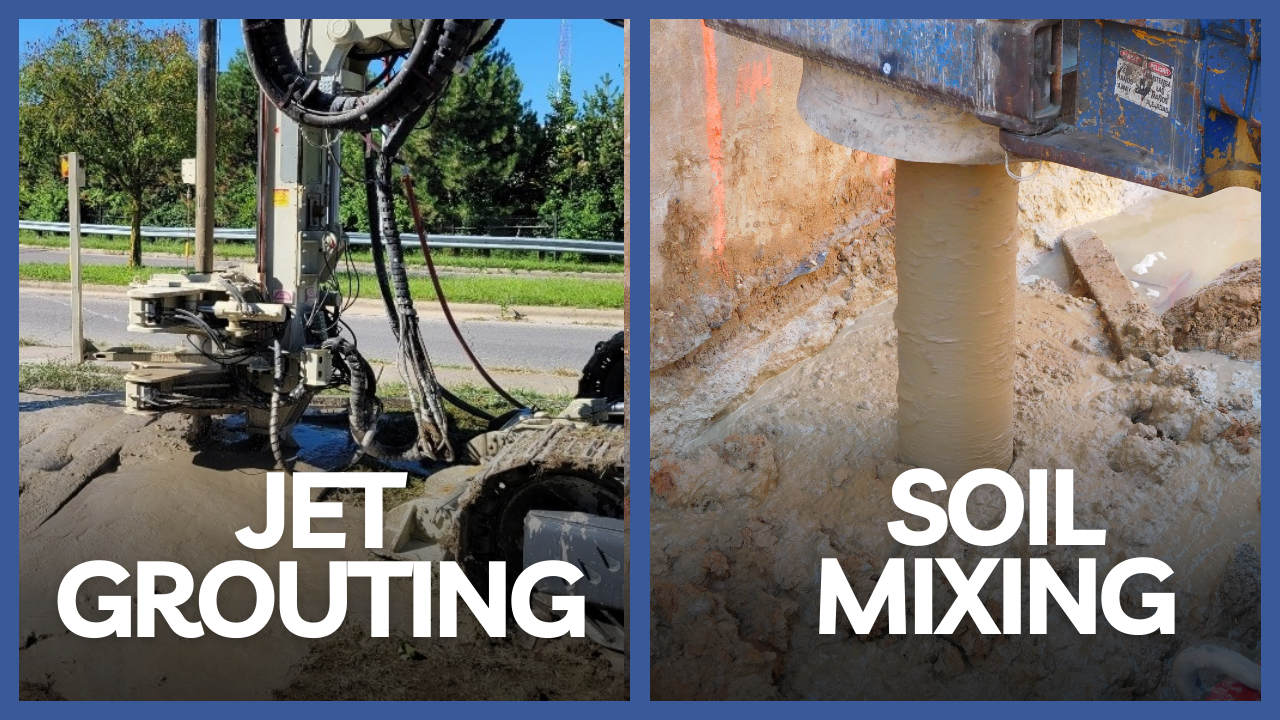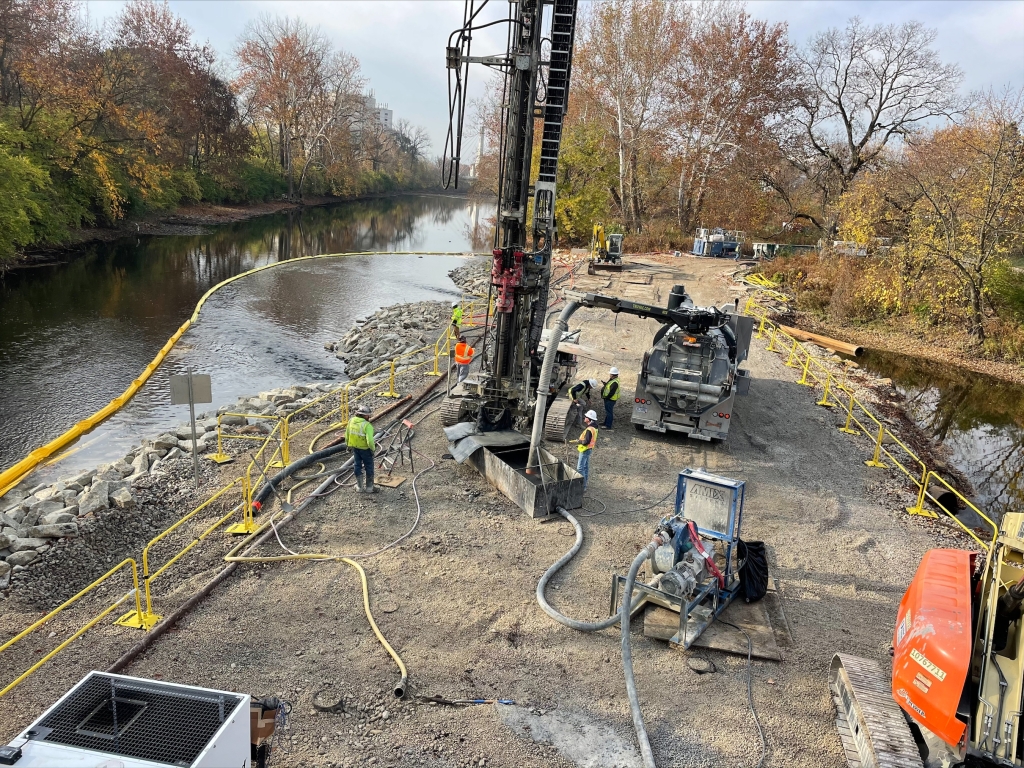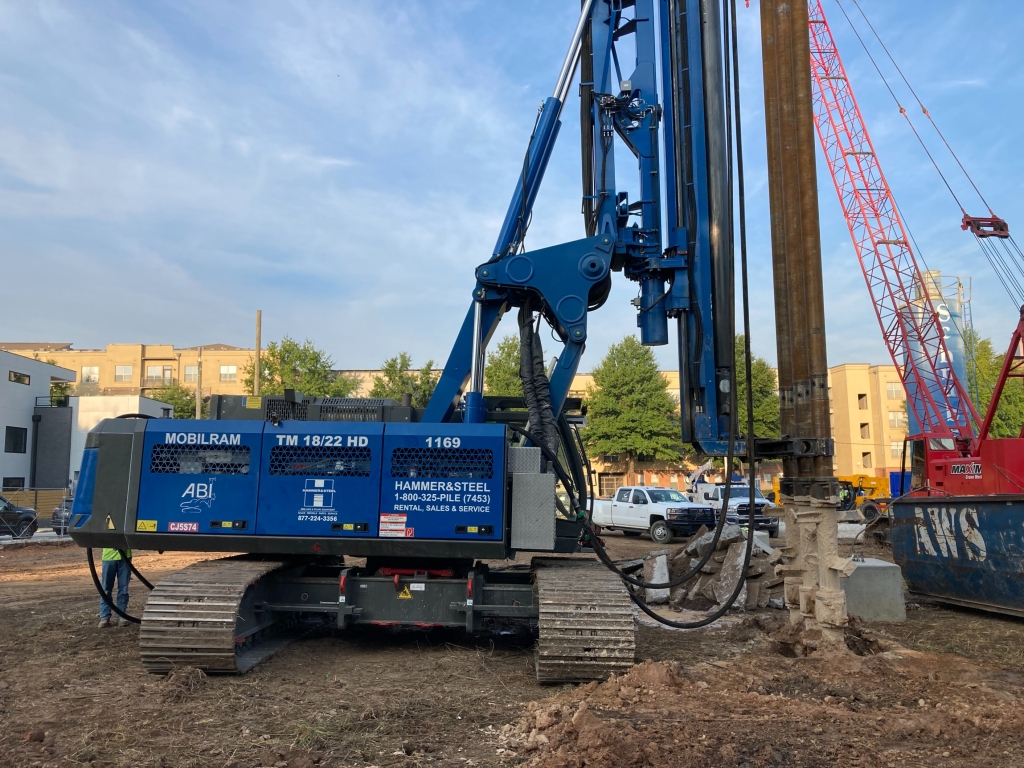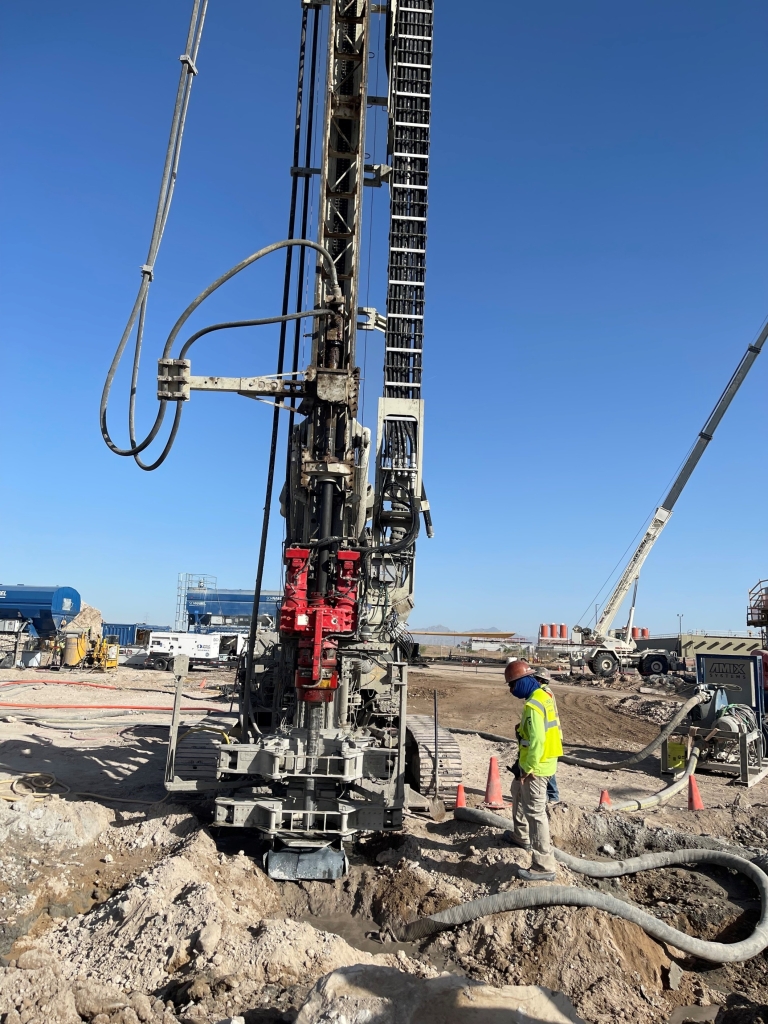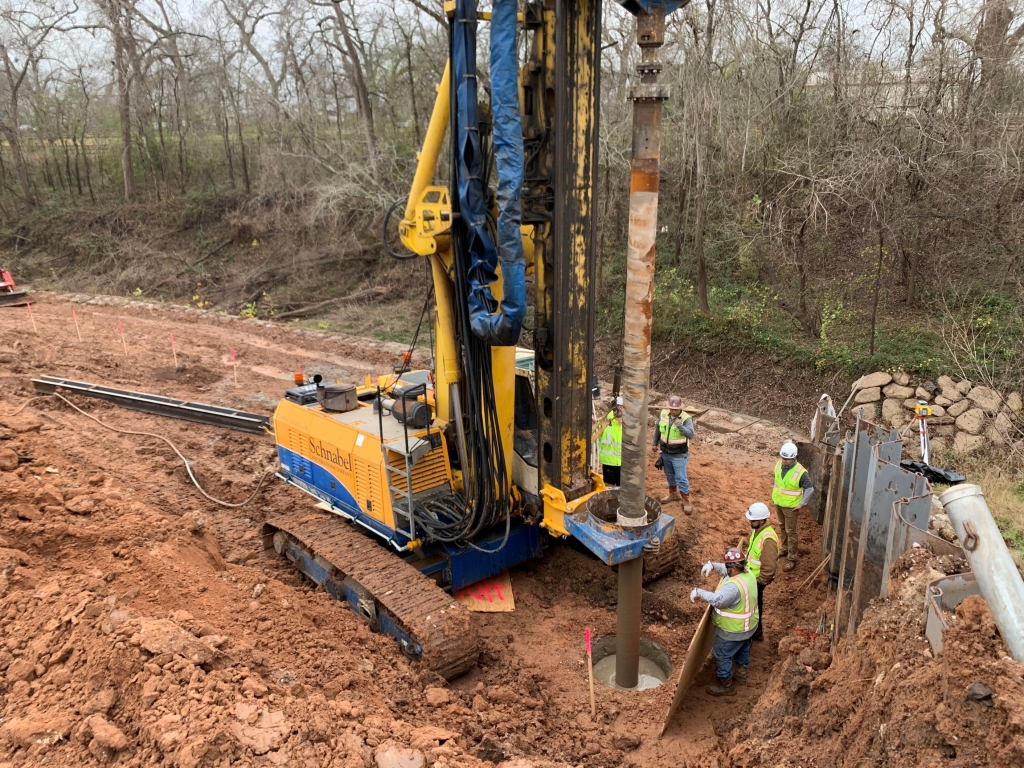Jet grouting and deep soil mixing are two ground improvement methods used in geotechnical engineering. While both methods improve the properties of soil, their approach and application are different.
Jet Grouting
What is Jet Grouting?
Jet grouting is a ground improvement method used to create cemented soil columns in the ground. It involves injecting a high-velocity stream of cement grout, sometimes in combination with high-pressure air or water into the soil. This grout mixes with the surrounding soil in-situ to create a column of improved soil.
How does Jet Grouting Work?
In jet grouting, a drilling bit with a nozzle at the end is drilled into the ground. The grout mix, usually a mixture of cement, water, and sometimes additives, is then pumped through the drilling bit at high pressure. As the grout mix is injected, it mixes with the surrounding soil and forms a column of improved soil. The column size can be adjusted by altering the pressure of the grout and the drilling speed of the bit.
Applications of Jet Grouting
Jet grouting is commonly used for ground improvement in construction projects where the soil needs to be strengthened or stabilized. Jet grouting also reduces the permeability of the soil. It is often used to create foundations for buildings, bridges, and other structures, as well as for slope stabilization and groundwater control.
Deep Soil Mixing
What is Deep Soil Mixing?
Deep soil mixing is a ground improvement technique that involves mechanically blending in-situ soil with a binder material, to improve its properties. It is typically used to create soil-cement columns or walls in the ground.
How does Deep Soil Mixing Work?
In deep soil mixing, a mixing tool is inserted into the ground to the desired depth. The binder material is then injected into the soil as the auger is rotated and gradually withdrawn, creating a column or wall of improved soil.
Applications of Deep Soil Mixing?
Deep soil mixing is used for similar purposes as jet grouting, such as foundation support, slope stabilization, and groundwater control. It is often preferred in situations when dealing with soft clay, silt, or loose sand.
Differences between Jet Grouting and Deep Soil Mixing
Methodology
Jet grouting involves injecting a grout mix at high pressure into the soil, which is then mixed with the surrounding soil to create a column of improved soil. The high-pressure grout erodes the surrounding soil creating a jet grout column that is significantly larger than the drill string. This process is effective in creating strong, impermeable columns that can support structures or stabilize slopes.
Deep soil mixing, on the other hand, involves mechanically mixing a binder material, such as cement, with the in-situ soil to create a more stable ground to work on. This method is often used to create soil-cement columns or walls in the ground, which can provide structural support or improve soil stability. The diameter of the soil-mix columns is the same as the mixing tools.
Equipment
Jet grouting requires specialized equipment, such as drilling rigs, grout mixing plants, storage silos for cement, high pressure pumps, and compressors. These special tools are necessary to inject the grout mix at high pressure and create the desired columns in the soil.
Deep soil mixing also requires grout mixing plants, cement silos, and pumps. Mixing tools can be installed on standard construction equipment, such as drill rigs and excavators or specialized equipment used only for soil mixing can be used.
Soil Improvement
Jet grouting creates soil-cemented columns that enhance the surrounding soil’s strength and load-bearing capacity. These columns can provide structural support or stabilize slopes, making them ideal for various construction purposes.
Deep soil mixing creates a more uniform mixture of in-situ soil and binder material, which may not be as strong but is more consistent. This method is often used in situations where a uniform soil composition is desired, such as in foundation support or ground improvement projects.
Cost
The cost-effectiveness of each method depends on the specific requirements of the project and the desired outcomes.
Applications
Jet grouting is often used for smaller, more precise ground improvement projects where the soil needs to be strengthened or stabilized in a specific area. It is commonly used for foundation support, underpinning, tunneling and shaft support, slope stabilization, and groundwater seepage control.
Deep soil mixing is more suitable for larger-scale projects that don’t have access constraints. It is often used in situations where a more uniform soil composition is required over a larger area, such as in embankment stabilization, road widening, or environmental remediation projects.
Case Studies
Centro West Block, Austin, TX: A shoring system was being constructed in this project to facilitate the construction of an underground parking garage in the East Austin neighborhood. Deep soil mixing was used to enhance the ground between soldier beams during the excavation, which prevented cave-ins. Learn more about this project here.
Boston Museum of Fine Arts, Boston, MA: The Museum of Fine Arts was undergoing an expansion project that would increase exhibit and storage space. To facilitate this, a cement deep soil mixed wall was installed. In addition, jet grouting was used to improve the ground and provide an impermeable subgrade layer. Learn more about this project here.
FAQs
Is jet grouting or deep soil mixing better for slope stabilization?
This depends on the specific requirements of the project but jet grouting may be more suitable for smaller slopes, while deep soil mixing may be more cost-effective for larger slopes.
Is deep soil mixing more environmentally friendly than jet grouting?
Both methods have environmental impacts, but deep soil mixing may be considered more environmentally friendly as it typically requires less energy and produces less waste.
Are there any limitations to the depth at which jet grouting and deep soil mixing can be used?
Both methods have limitations on the depth at which they can be effectively used, depending on factors such as soil conditions and equipment capabilities.
Can jet grouting and deep soil mixing be used together in the same project?
Yes, jet grouting and deep soil mixing can be used together in the same project to achieve different ground improvement goals.
Conclusion
In conclusion, jet grouting and deep soil mixing are two effective ground improvement techniques used in geotechnical engineering. While they differ in their approach and application, both methods can be used to strengthen and stabilize soil and decrease the soil’s permeability as required in construction projects. When choosing between jet grouting and deep soil mixing, one must consider several factors such as the specific requirements of the project, site and soil conditions, accessibility to drilling equipment and cost.
